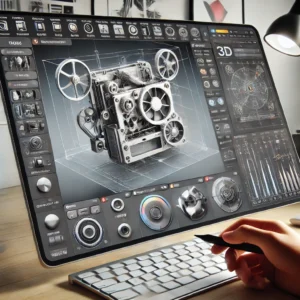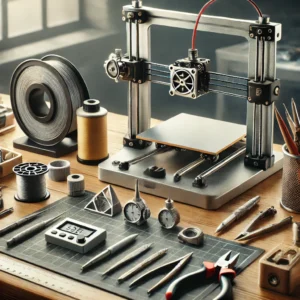3D Modeling Software:A Guide to Choosing the Right Tools

3D modeling has become a crucial part of industries ranging from entertainment to engineering. Choosing the right 3D modeling software is essential for success, whether you’re designing games, animations, architectural blueprints, or manufacturing prototypes. In this guide, we’ll explore the best options, features, and considerations to help you make the right choice.
What is 3D Modeling Software?
3D modeling software allows users to create three-dimensional representations of objects. This software is used across various fields, including architecture, video game development, product design, and more. Each 3D modeling software comes with unique tools for creating detailed shapes, textures, and simulations.
Key Features to Look For in 3D Modeling Software
When choosing the right software, consider these essential features:
-
Ease of Use:
For beginners, intuitive interfaces are key. Look for software that offers tutorials and a community for support. -
Compatibility:
Ensure the software can export models in formats compatible with other tools you use. -
Customization:
Advanced users often need software that allows for plugins, custom scripts, and flexibility. -
Rendering Capabilities:
The ability to render lifelike images is essential for certain industries such as architecture and animation.
Popular 3D Modeling Software
Here are some of the most commonly used 3D modeling programs:
-
Blender:
A free and open-source platform, Blender is a go-to for artists in the animation and game development fields. It offers robust features and a dedicated community. -
AutoCAD:
Known for its precision, AutoCAD is widely used in architecture and engineering. It’s excellent for technical designs and drafting. -
Tinkercad:
Ideal for beginners, Tinkercad offers simple tools for creating basic 3D models. It’s a great starting point for students or hobbyists. -
Fusion 360:
This is a cloud-based tool used primarily by engineers and product designers. Fusion 360 offers collaboration features, which make it perfect for team projects.
Best Practices for Using 3D Modeling Software
-
Start Simple:
If you’re new to 3D modeling, begin with basic shapes and gradually move to more complex designs. -
Understand the Workflow:
Learn the complete workflow of your chosen software, from initial design to final rendering. -
Take Advantage of Tutorials:
Most platforms provide video tutorials that are invaluable for mastering the tools. -
Upgrade as You Learn:
As you grow more comfortable, you can transition to more advanced software like Maya or ZBrush.
Visit our other website: aibrainpowered.com
Choosing the right 3D modeling software depends on your goals, experience level, and industry. Beginners may start with Tinkercad or Blender, while professionals may prefer AutoCAD or Fusion 360. Whichever tool you choose, ensure it offers the flexibility, rendering capabilities, and ease of use necessary for your projects.




